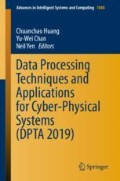Abstract
In the pump-free lithium bromide absorption refrigeration system, the two-phase flow pattern in the lift tube of the bubble pump has a decisive influence on the lift performance of the bubble pump. The heat and mass transfer between two phase interfaces can be accurately described by mesoscale method,In order to explore the working mechanism of lithium bromide solution bubble pump, the improved lattice Boltzmann method combine lattice Boltzmann heat transfer model are adopted to simulate The rising process and coalescence behavior of multiple bubbles in lithium bromide solution in a vertical bubble pump with gas-liquid density ratio of 2778. The density field and velocity vector distribution of multiple bubbles under different initial conditions were obtained. The critical coalescence distance of water vapor in lithium bromide solution with double bubbles and 3 bubbles is obtained. The motion process of 4 bubbles with different initial settings is simulated. The influence of the number of bubbles on the critical coalescence distance is discussed. That results provide a great reference value for the study of the transition mechanism between flow patterns.
Access this chapter
Tax calculation will be finalised at checkout
Purchases are for personal use only
References
Hoffmann, L., I. Greiter, A. Wagner, et al. 1996. Experimental investigation of heat transfer in a horizontal tube falling film absorber with aqueous solutions of LiBr with and without surfactants. International Journal of Refrigeration 19: 331–341.
Benhmidene, A., B. Chaouachi, and S. Gabsi. 2010. A review of bubble pump technologies. Journal of Applied Sciences 10 (16): 1806–1813.
Hartunian, R.A., and W. Sears. 1957. On the instability of small gas bubbles moving uniformly in various liquids. Journal of Fluid Mechanics 3 (1): 27–47.
Walters, J., and J. Davidson. 1963. The initial motion of a gas bubble formed in an inviscid liquid. Journal of Fluid Mechanics 17 (3): 321–336.
Li, W.Z., D.Y. Zhao, and G.J. Chen. 2006. A numerical simulation on effects of vertical channel wide on deformation and heat transfer of a rising gas bubble. Chinese Journal of Computational Mechanics 23 (2): 196–201.
Ju, H., G. Chen, G.D. Li, et al. 2011. Experimental study on motion behavior of single bubble rising along inclined plane in still water. Chinese Journal of Hydrodynamics 26 (3): 327–332.
Dijkhuizen, W., S.A.M. Van, and J.A.M. Kuipers. 2010. Numerical and experimental investigation of the lift force on single bubbles. Chemical Engineering Science 65 (3): 1274–1287.
Rabha, S., and V. Buwa. 2010. Volume-of-fluid (VOF) simulations of rise of single/multiple bubbles in sheared liquids. Chemical Engineering Science 65 (1): 527–537.
Gong, D.X., S.F. Huang, K. Wang, et al. 2014. The study on mechanism of bubble motion in rectangular channel by CFD. Nuclear Power Engineering 35 (3): 111–116.
Peng, X.Q., S.C. Chen, Y.P. Song, et al. 2013. Numerical simulation of flotation bubble motion in suspension fluid. The Chinese Journal of Nonferrous Metals 23 (11): 3232–3237.
Wang, C.H., and S.Y. Lin. 2011. The coupled motion of bubbles in ultrasonic field. Acta Acustic 36 (3): 325–331.
He, D., Y.P. Li, and Y.Y. Liu. 2011. Effect of initial bubble shape on dynamics of a buoyancy-driven bubble. Journal of XI’an Jiaotong University 45 (1): 43–47.
Inamuro, T., T. Ogata, S. Tajima, et al. 2004. A lattice Boltzmann method for incompressible two-phase flows with large density differences. Journal of Computational Physics 198: 628–644.
Inamuro, T., T. Ogata, and F. Ogino. 2004. Numerical simulation of bubble flows by the lattice Boltzmann method. Future Generation Computer Systems 20 (6): 959–964.
Acknowledgements
This work was funded by National Natural Science Foundation of China (project number: 51609131); Shandong Provincial Natural Science Foundation, China (project number: ZR2017MEE031); Shandong Jiaotong University Doctoral Research Initiation Fund, and Shandong Jiaotong University “Climbing” Research Innovation Team Program. Shandong Provincial Key R&D plan (project number: 2018GGX105002).
Author information
Authors and Affiliations
Corresponding author
Editor information
Editors and Affiliations
Rights and permissions
Copyright information
© 2020 Springer Nature Singapore Pte Ltd.
About this paper
Cite this paper
Liu, B., Wang, M., Yu, F., Zhang, S. (2020). Intelligent Computation of Bubble Group Motion in Mesoscale Simulation. In: Huang, C., Chan, YW., Yen, N. (eds) Data Processing Techniques and Applications for Cyber-Physical Systems (DPTA 2019). Advances in Intelligent Systems and Computing, vol 1088. Springer, Singapore. https://doi.org/10.1007/978-981-15-1468-5_102
Download citation
DOI: https://doi.org/10.1007/978-981-15-1468-5_102
Published:
Publisher Name: Springer, Singapore
Print ISBN: 978-981-15-1467-8
Online ISBN: 978-981-15-1468-5
eBook Packages: Intelligent Technologies and RoboticsIntelligent Technologies and Robotics (R0)

